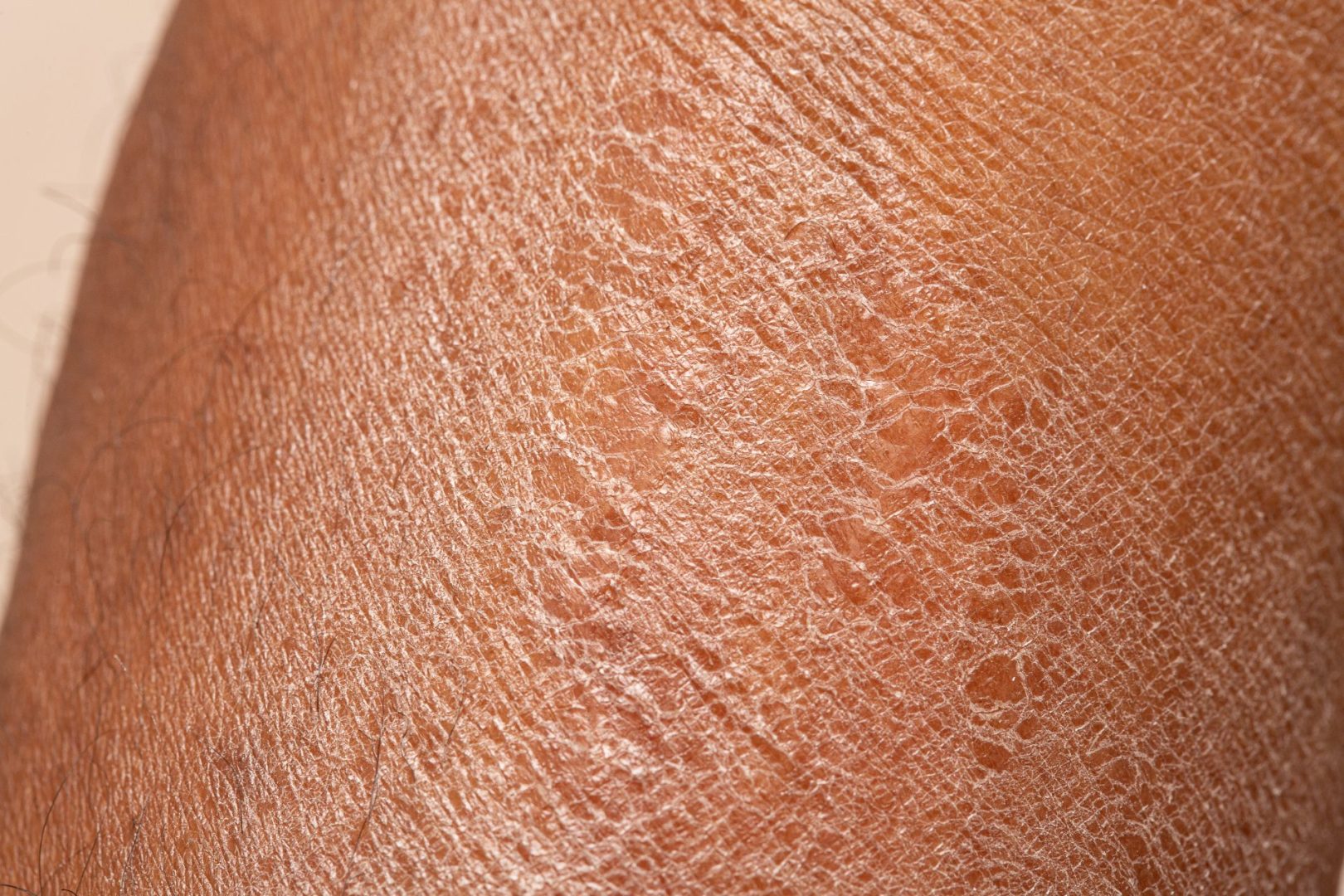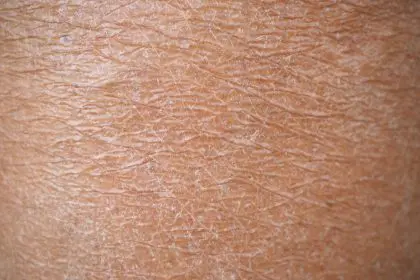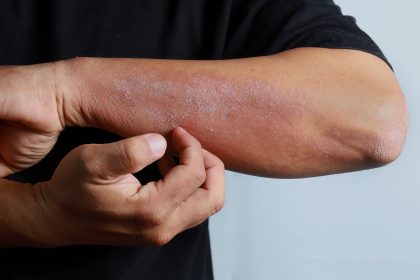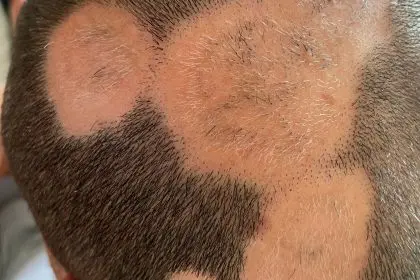Scaling skin appears as patches of dryness, flakiness, or peeling that disrupt the normally smooth surface texture. This common dermatological concern affects virtually everyone at some point, ranging from minor seasonal dryness to more significant medical conditions requiring professional intervention. Understanding the various causes helps identify appropriate treatments and preventive measures for healthier skin.
The skin’s outermost layer, called the stratum corneum, consists of flat, dead skin cells embedded in a matrix of natural oils and moisturizing compounds. This protective barrier shields deeper skin layers while maintaining proper hydration. When this delicate system becomes disrupted, the orderly shedding of surface cells transforms into visible scaling, flaking, or peeling that ranges from barely noticeable to medically significant.
While occasional mild scaling rarely indicates serious problems, persistent or severe cases warrant closer examination. The location, appearance, accompanying symptoms, and pattern of scaling all provide valuable diagnostic clues about underlying causes and appropriate treatment approaches.
8 common causes of scaling and flaking skin
- Environmental dryness represents the most frequent trigger for scaling skin. Low humidity environments, whether from winter weather, desert climates, or artificial heating and cooling systems, draw moisture from the skin’s outer layers. This moisture depletion causes the stratum corneum to become stiff and brittle, leading to microscopic cracks that appear as flaking and scaling. These environmentally-induced changes typically affect exposed body areas first, including the face, hands, and lower legs.
- Excessive cleansing disrupts the skin’s natural moisture balance through frequent washing, hot water exposure, or harsh cleansing products. These practices strip away protective lipids that normally seal moisture within the skin barrier. Without these natural oils, water evaporates more rapidly from the skin surface, creating dryness that manifests as flaking and roughness. Areas subjected to frequent washing, particularly hands and facial skin, show this damage pattern most prominently.
- Contact dermatitis occurs when skin reacts to direct exposure to irritating or allergenic substances. This inflammatory response disrupts normal skin barrier function, causing redness, itching, and characteristic scaling patterns that correspond precisely to areas of contact with the triggering substance. Common culprits include skincare ingredients, metals in jewelry, industrial chemicals, plants like poison ivy, and household cleaning products.
- Seborrheic dermatitis creates distinctive yellowish, greasy-appearing scales, particularly in areas with high oil gland density like the scalp, face, upper chest, and back. This chronic inflammatory condition relates to both an overreaction to normal skin yeasts and excessive oil production. Unlike typical dry skin, seborrheic dermatitis patches appear oily underneath the scales and often cause redness and mild itching. Stress, seasonal changes, and hormonal fluctuations frequently trigger flare-ups.
- Psoriasis accelerates the skin cell production cycle dramatically, causing cells to mature and reach the surface in days rather than weeks. This rapid turnover prevents normal shedding processes, creating thick, silvery-white scales atop raised, reddened patches. These characteristic plaques most commonly appear on elbows, knees, scalp, and lower back, though they can affect any body area. Unlike simple dry skin, psoriasis scales tend to be thicker, more adherent, and often reveal pinpoint bleeding spots when removed.
- Fungal infections create various scaling patterns depending on the specific organism and body location involved. Tinea infections (commonly called ringworm) typically produce circular patches with raised, scaly borders and clearer centers. When affecting feet (athlete’s foot), scaling often appears between toes and on soles. Scalp infections create patchy hair loss with distinctive scaling. These infections spread through direct contact and thrive in warm, moist environments.
- Eczema (atopic dermatitis) creates intensely itchy patches of red, scaling skin that often develop tiny fluid-filled blisters during active flares. This chronic inflammatory condition frequently begins in childhood and shows characteristic distribution patterns, typically affecting the inner elbows, behind knees, neck, and face. The intense itching often leads to scratching that further damages the skin barrier, creating a cycle of increasing dryness, scaling, and irritation.
- Nutritional deficiencies sometimes manifest through skin changes, including distinctive scaling patterns. Inadequate intake of essential fatty acids, zinc, vitamin A, or B-complex vitamins can disrupt the skin’s renewal processes and barrier function. Unlike localized conditions, nutritional causes typically produce more generalized scaling that affects multiple body areas simultaneously. These deficiencies may accompany restrictive diets, malabsorption conditions, or increased nutritional demands during illness.
Diagnostic approaches for identifying the cause
Determining the specific reason behind scaling skin often requires systematic evaluation of several factors. This assessment helps distinguish between simple environmental dryness and more complex medical conditions requiring specific interventions.
Distribution patterns provide important diagnostic clues. Environmentally-induced dryness typically affects exposed areas and shows generalized patterns. In contrast, conditions like psoriasis and eczema demonstrate characteristic locations and configurations. Seborrheic dermatitis specifically targets oil-rich areas, while contact dermatitis precisely matches exposure sites. These distinctive patterns often suggest the underlying cause before other testing occurs.
Scale appearance varies significantly between conditions. The thick, silvery scales of psoriasis differ markedly from the thin, ashy flakes of simple dryness. Fungal infections typically produce reddish borders with scaling that spreads outward. Seborrheic dermatitis creates yellowish, greasy-appearing scales rather than dry flakes. These visual characteristics help narrow diagnostic possibilities.
Associated symptoms frequently accompany different scaling conditions. Itching severity, presence of pain, burning sensations, redness, swelling, or blistering all provide diagnostic direction. Conditions like eczema typically cause intense itching, while psoriasis more often produces burning or soreness. Simple dryness usually creates mild discomfort without significant inflammation.
Triggering factors and timing offer additional insights. Seasonal patterns, relationship to stress, correlation with medication changes, recent travel, new products, or environmental exposures all help identify potential causes. Keeping a detailed journal of flare-ups and potential triggers often reveals patterns that guide diagnosis and treatment.
Medical history significantly influences the diagnostic approach. Previous skin conditions, family history of dermatological issues, allergies, autoimmune disorders, and medication use all affect the likelihood of specific diagnoses. This background information helps contextualize current symptoms within broader health patterns.
When clinical evaluation doesn’t yield clear answers, specialized testing may become necessary. These approaches might include:
Skin scrapings examined under microscopy to identify fungal elements
Patch testing to identify specific allergens causing contact dermatitis
Wood’s lamp examination using ultraviolet light to identify certain infections
Skin biopsy to examine cellular patterns in persistent or unusual cases
Blood tests to evaluate for systemic conditions or nutritional deficiencies
Treatment approaches tailored to underlying causes
Effective management of scaling skin depends entirely on addressing the specific underlying cause rather than just treating surface symptoms. While some general measures help most conditions, targeted approaches yield the best long-term results.
Environmental dryness responds well to straightforward moisturizing strategies. The most effective regimen involves applying emollient-rich moisturizers immediately after bathing while skin remains slightly damp, which traps existing moisture within the skin. Heavier, oil-based formulations prove particularly effective for severe dryness, while lighter lotions suffice for mild cases. Humidifying indoor environments, especially bedrooms during sleeping hours, creates significant improvement by reducing moisture evaporation from skin surfaces.
Cleansing modifications benefit nearly all scaling conditions. Switching to lukewarm rather than hot water, limiting shower or bath duration to under 10 minutes, and choosing gentle, fragrance-free cleansers preserve the skin’s natural moisture balance. Reducing washing frequency on areas not requiring daily cleansing (like limbs and torso) allows natural oils to reestablish protective barriers between necessary hygiene practices.
Contact dermatitis requires identifying and eliminating the triggering substance. Once the allergen or irritant is removed, the skin typically heals within days to weeks. Temporary use of anti-inflammatory preparations like hydrocortisone helps manage symptoms during recovery. For unavoidable exposures (like occupational chemicals), protective barriers including gloves and specialized clothing prevent recurrence.
Seborrheic dermatitis responds to antifungal and anti-inflammatory treatments that address both the yeast component and resulting inflammation. Medicated shampoos containing ingredients like ketoconazole, selenium sulfide, or pyrithione zinc effectively treat scalp involvement when used regularly. For facial and body areas, targeted antifungal creams combined with mild anti-inflammatory preparations create improvement when used consistently during flare periods.
Psoriasis management typically involves a multi-faceted approach depending on severity. Mild cases often improve with regular use of keratolytic products containing salicylic acid or urea, which help dissolve thick scale accumulations. Vitamin D analogues, topical retinoids, and controlled exposure to specific wavelengths of UV light help normalize skin cell turnover rates. For more severe cases, systemic medications that modulate immune function may become necessary to achieve lasting improvement.
Fungal infections require consistent use of appropriate antifungal medications. Topical treatments prove sufficient for limited surface infections, while more extensive or resistant cases may need oral antifungal therapy. Complete eradication often requires continuing treatment for weeks after visible symptoms resolve to prevent recurrence. Simultaneously disinfecting contaminated items like shoes, socks, or shower surfaces prevents reinfection cycles.
Eczema treatment focuses on repairing the damaged skin barrier while controlling inflammation and itch. Intensive moisturizing with ceramide-containing products helps restore normal barrier function. During flares, controlled use of anti-inflammatory preparations reduces immune reactivity. Trigger avoidance, including minimizing exposure to harsh soaps, wool fabrics, temperature extremes, and known allergens, prevents cycle escalation.
Nutritional approaches sometimes create improvement when deficiencies contribute to scaling. Increasing dietary sources of essential fatty acids through foods like fatty fish, flaxseeds, and walnuts provides building blocks for healthy skin barriers. Ensuring adequate zinc, B vitamins, and vitamin A through either dietary sources or supplements supports normal skin renewal processes when true deficiencies exist.
Prevention strategies for healthier skin maintenance
Beyond treating active scaling issues, several preventive approaches help maintain optimal skin barrier function and minimize recurrences.
Seasonal adjustments to skincare routines accommodate changing environmental conditions. Transitioning to richer moisturizers during winter months or dry climates, while using lighter formulations during humid seasons, provides appropriate protection without over-treating. Similarly, adjusting cleansing frequency based on activity levels and environmental exposure prevents unnecessary barrier disruption.
Protective clothing shields vulnerable skin from extreme conditions. Wide-brimmed hats, long sleeves, and gloves block damaging UV radiation while reducing windburn and environmental drying effects. For individuals with occupational exposures to irritants, appropriate protective gear prevents contact dermatitis development.
Dietary choices significantly impact skin health through multiple mechanisms. Adequate hydration supports proper cellular function throughout the skin, while sufficient protein intake provides building blocks for new cell development. Anti-inflammatory foods rich in omega-3 fatty acids and antioxidants help modulate immune responses involved in conditions like psoriasis and eczema.
Stress management techniques benefit many skin conditions with strong mind-body connections. Practices like regular exercise, adequate sleep, meditation, and other relaxation approaches help regulate stress hormones that trigger or worsen conditions like psoriasis, eczema, and seborrheic dermatitis.
Environmental modifications create skin-friendly surroundings. Maintaining moderate indoor humidity levels between 45-60%, using air purifiers to reduce airborne allergens, and selecting fragrance-free laundry products all reduce potential triggers for sensitive skin conditions that manifest through scaling and flaking.
Regular dermatological evaluation provides early intervention for developing conditions. Annual skin checks allow for monitoring of changing patterns, professional assessment of treatment effectiveness, and adjustment of management strategies before minor issues develop into significant problems requiring more intensive intervention.
By understanding the specific causes behind scaling skin and implementing targeted treatment approaches, most individuals achieve significant improvement. This systematic approach transforms treating surface symptoms into addressing root causes, creating healthier skin that maintains its natural protective functions while presenting a smooth, comfortable outer appearance.














